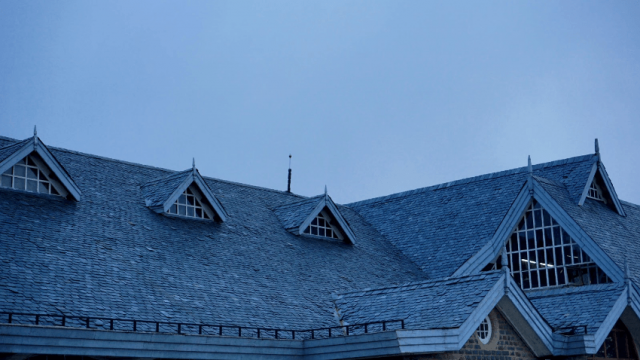When you’re getting work done on your roof, it helps to speak the same language as your contractor. However, not everyone is familiar with all of the terminology used in the roofing industry, especially where commercial roofing is concerned.
In order to help potential clients feel more comfortable talking to roofing professionals, we’ve put together this handy glossary of basic roofing terms.
Aggregate
A surfacing or ballast for a roof system, made of rock, stone, crushed stone, crushed slag, crushed lava rock, water-worn gravel, or marble chips.
Alligatoring
The cracked patterns in surfacing bitumen on a built-up roof that resemble an alligator’s hide.
Apron Flashing
Flashing located at the juncture of the top of a sloped roof and a vertical wall or a steeper-sloped roof.
Asphalt
A black substance left as a residue from evaporating or otherwise processing crude oil or petroleum.
Base Sheet
Asphalt-impregnated or coated felt used as the first ply in built-up roofing systems.
Bitumen
A natural or manufactured flammable substance made primarily of hydrocarbons and used in surfacing and waterproofing.
Built-Up Roof Membrane
A roof membrane made up of alternating layers of bitumen and felts or other fabrics, usually surfaced with asphalt, aggregate, or a granule-surfaced cap sheet.
Butyl
A rubber-like material used to make coatings, sealants, and adhesives.
Cap sheet
A modified waterproofing membrane that is applied via open flame to a base sheet. The top surface is granulated which protects the roof from harmful UV rays and helps extend the life of your roof
Coated Base Sheet
A membrane saturated with asphalt and later coated with harder, more viscous asphalt to make it less permeable to moisture.
Cold Process Built-Up Roof
A roof made up of multiple plies of felts or other fabrics, laminated together with adhesives.
Counter Flashing
Usually a strip of metal that is bent in a certain direction for the application to make it watertight by redirecting water to the appropriate locations
Creep
Movement of the roof membrane that creates deformities in the roof system.
Double Graveling
The process of applying two layers of gravel in hot bitumen. Loose gravel must be cleared before the second layer is applied.
EDPM
Ethylene Propylene Diene Monomer, a rubber-like elastomer used in single-ply roofing systems.
Elastomeric Coating
A coating that can be stretched up to twice its dimensions, while still able to return to its original shape.
Flashing
Components used to seal or weatherproof the edges, perimeters, valleys, and other interruptions in the roof system.
Galvanized Steel
Steel coated with zinc to help it resist corrosion.
Guardrail Safety System
A railing system that is used as a barrier on the edge of a roof to stop people from falling at dangerous points.
Glaze Coat
The topmost layer of asphalt on a built-up roof membrane.
Granulate
Just how it sounds, even in cooking when you sprinkle sugar on top of cookies. But this time granules are added to raw tar on the roof, which protects it from the sun and other potentially harmful situations that may affect the integrity of the roofing system.
Heat Welding
The process of melting sheets of roofing membrane together with heat (either hot air or an open flame) and pressure, as in torch-on roofing systems.
Ice Dam
Ice that forms where warm surface transitions to a cold surface. Commonly seen along the overhang of a house, it can cause ice and water to back up under roofing materials.
Impregnate
The act of coating, saturating or enclosing a mat or fabric in bitumen or some other liquid compound.
Live Loads
Temporary loads that the roof must be able to support, which can include people, equipment, snow, or anything else specified by building codes.
Loose-Laid Membranes
Roofing materials that are only attached at the perimeter and penetrations of the roof, held in place with ballast like stone or gravel.
Membrane
The waterproofing layer of a roofing system.
Moisture Relief Vent
A vent installed in a roofing membrane to allow moisture vapor to escape after it has become trapped within the roofing system.
Nailing Pattern
The pattern or method by which nails are applied to secure a roofing layer.
Protection board
Is a bituminous membrane used as added protection to help ensure adequate waterproofing for roofing system lying on top
Purlin
A horizontal, secondary structural member used to transfer loads from the primary structural frame.
Roof Covering
The roof assembly’s outermost reinforced layer.
Roof Slope
The angle the roof surface plane makes with the horizontal plane, expressed as a ratio of the vertical rise for every twelve inches of horizontal length.
Single-Ply Roofing
A roofing system consisting of a single-ply membrane as its primary component.
Slag
Blast furnace residue that can be used as an aggregate surfacing material.
Soffit ventilation
Soffit ventilation is quite simply a vent on the outside of the house in the eaves location that allows fresh air to be drawn up through the attic and out through peak venting.
Sun Tunnel
Is a fixed pipe installed through a roof that is highly reflective to help convey light from outside to within a house.
Splash Guard
A masonry block or metal pan placed below a downspout to prevent soil erosion on the ground.
Standing Seam
A metal roof system that consists of panels with seams that are turned up to overlap, interlock, or fold to form a seal that prevents moisture from passing through.
Substrate
The surface upon which the roofing system is installed.
Sump
The depression created around roof drains and scuppers to facilitate roof drainage.
Thermal Shock
Roof damage caused by the expansion and contraction of materials under extreme changes of temperature. Can occur when cold rains suddenly follow a hot day.
Underlayment
Has many uses – in the roofing world it is a layer of synthetic underlayment that essentially once put on, the roof is waterproof. Also allows for an even surface to apply the new roofing system
Valley
The internal angle of two intersecting sloped roof planes.
Vapor Retarder
Materials used to prevent water vapor from passing through the roof assembly.
Weep Holes
Small holes that allow moisture to drain after it has collected inside a building component.
Wind Uplift
The displacement of shingles or other roofing components caused by changes in air pressure from wind blowing across different parts of the roof.
Now that you know how to talk the talk, get in touch with our roofing experts today for answers to any questions you might have!

